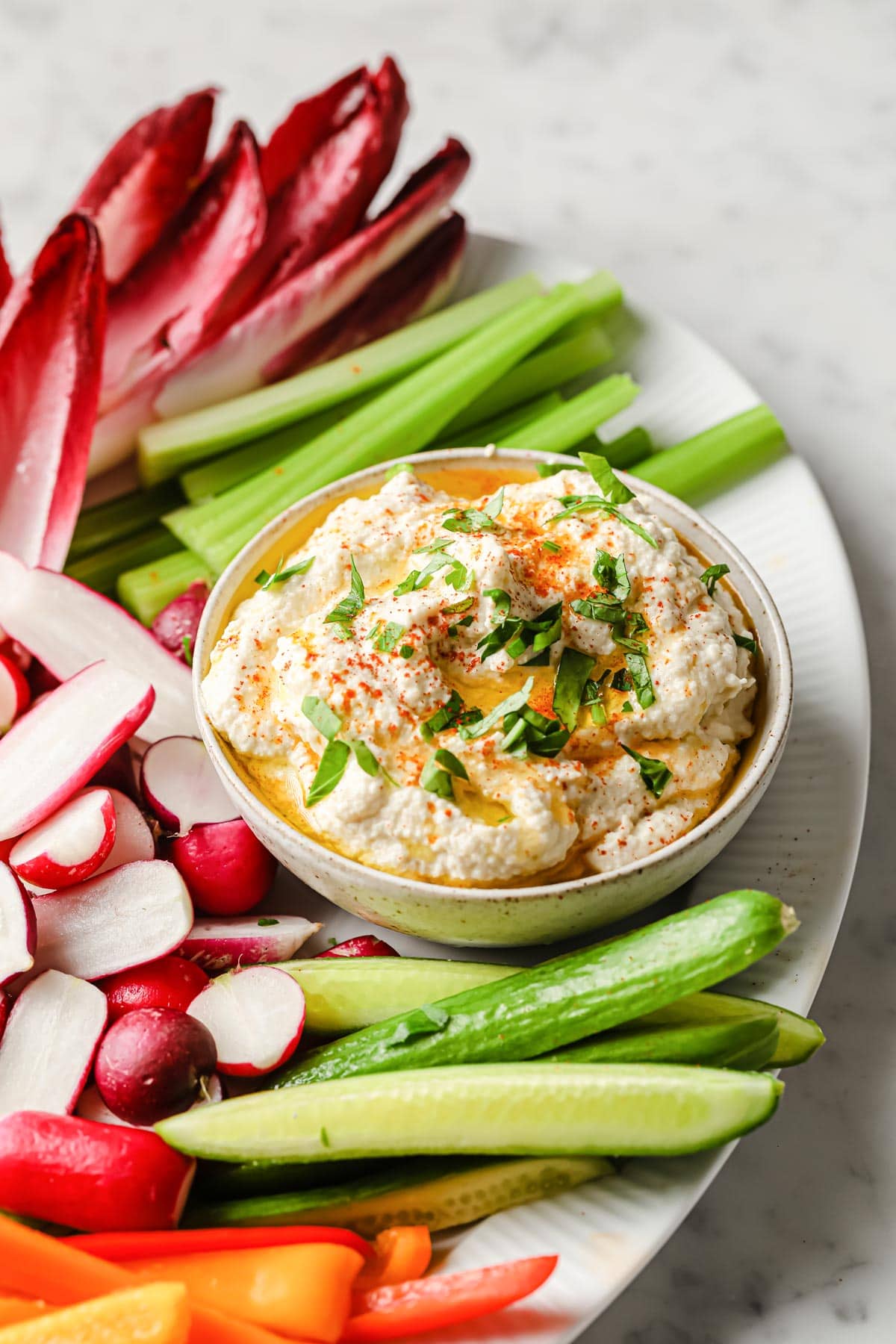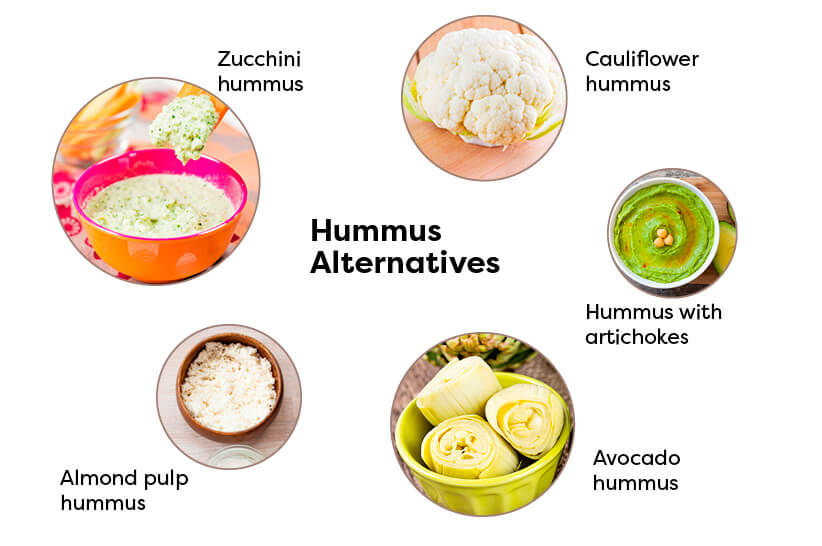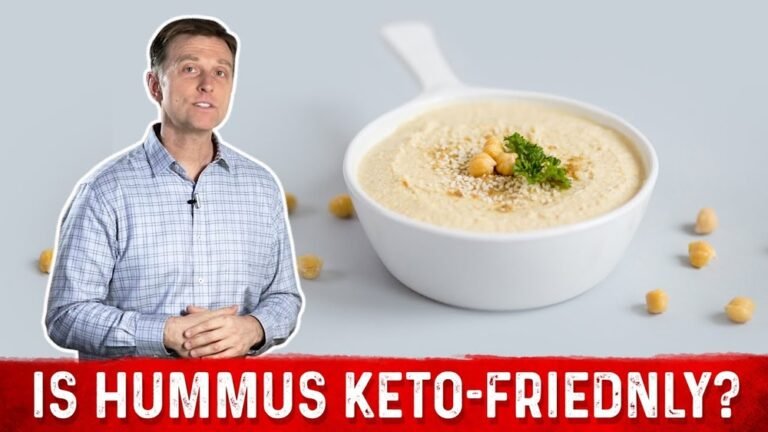Are you looking for a tasty snack that fits perfectly into your low carb diet? Imagine enjoying creamy, flavorful hummus without worrying about hidden carbs messing up your progress.
Sounds great, right? This guide will show you how to make and enjoy low carb diet hummus that satisfies your cravings and keeps you on track. Keep reading, because your new favorite healthy snack is just a few steps away!

Credit: sugarfreelondoner.com
Benefits Of Low Carb Hummus
Low carb hummus offers many benefits beyond just being tasty. It fits well into healthy eating plans and helps maintain good nutrition. This type of hummus is a smart choice for those wanting to cut carbs but still enjoy rich flavors.
It supports your body’s needs and keeps meals interesting. Eating low carb hummus can make healthy living easier and more enjoyable.
Nutritional Advantages
Low carb hummus is rich in protein and fiber. These nutrients help keep you full longer. It also contains healthy fats that support brain and heart health. Vitamins and minerals in hummus boost overall wellness. This hummus has fewer carbs than regular versions, helping control blood sugar levels.
Supports Weight Management
Eating low carb hummus helps control calorie intake. Its protein and fiber content reduce hunger and cravings. This can prevent overeating and snacking on unhealthy foods. It adds flavor without extra sugars or carbs. Low carb hummus is a good snack choice for weight loss or maintenance.
Suitable For Various Diets
Low carb hummus fits many eating styles. It works well for keto, paleo, and diabetic diets. People avoiding gluten or dairy can also enjoy it safely. This hummus is plant-based, making it good for vegetarians and vegans. Its simple ingredients keep it a clean and healthy option.
Choosing Ingredients
Choosing the right ingredients is key to making low carb diet hummus. Traditional hummus uses chickpeas, but they are high in carbs. Substituting chickpeas with low carb options keeps the hummus healthy and tasty. The oils and spices you pick also impact flavor and nutrition.
Low Carb Alternatives To Chickpeas
Cauliflower is a popular low carb substitute. It blends smoothly and has a mild taste. Another choice is zucchini, which adds moisture and fiber. Cooked white beans, like cannellini, offer creaminess with fewer carbs. These ingredients keep your hummus low in carbs while rich in texture.
Best Oils And Flavorings
Extra virgin olive oil is the top pick for low carb hummus. It adds healthy fats and a fruity flavor. Avocado oil works well too, giving a buttery texture. Tahini, a sesame seed paste, is classic and adds depth. Lemon juice brightens the taste without adding carbs.
Spices That Enhance Taste
Cumin adds warmth and earthiness to hummus. Paprika offers a smoky or sweet note, depending on the type. Garlic powder provides sharpness without the moisture of fresh garlic. Salt balances all flavors and enhances taste. These spices make your hummus flavorful and inviting.
Basic Low Carb Hummus Recipe
Low carb hummus offers a tasty, healthy alternative to traditional hummus. It uses ingredients with fewer carbs but keeps the creamy, rich flavor. This basic recipe is easy and quick. It fits well into low carb diets and is great for snacks or meals.
Making low carb hummus at home saves money and lets you control the ingredients. You get fresh, natural taste without added sugars or preservatives. This recipe uses cauliflower instead of chickpeas to cut carbs while keeping a smooth texture and delicious taste.
Step-by-step Preparation
Start by steaming one small head of cauliflower until tender. Let it cool slightly. Place the cauliflower in a food processor. Add two tablespoons of tahini, two cloves of garlic, and three tablespoons of olive oil. Pour in two tablespoons of lemon juice and half a teaspoon of salt. Blend all ingredients until smooth and creamy. Stop occasionally to scrape the bowl sides. Adjust seasoning with more salt or lemon juice if needed.
Tips For Smooth Texture
Use fresh cauliflower for the best texture. Avoid overcooking it to prevent mushiness. Blend the mixture for at least two minutes. Add olive oil slowly to help emulsify. If the hummus is too thick, add a tablespoon of water or olive oil. Blend again for a silky finish. Taste often to balance flavors. A smooth hummus feels light and rich on the tongue.
Storing And Shelf Life
Store low carb hummus in an airtight container. Keep it refrigerated for up to five days. Stir well before serving. For longer storage, freeze in small portions. Thaw in the fridge overnight before use. Freshness and flavor stay best within the first few days. Avoid leaving hummus out at room temperature for long.

Credit: thebigmansworld.com
Creative Flavor Variations
Low carb diet hummus does not have to be plain or boring. You can enjoy many creative flavor variations that keep it exciting and tasty. These flavors add a new twist without extra carbs. They make hummus perfect for snacks and meals.
Spicy Jalapeno Hummus
Spicy jalapeno hummus adds a bold kick to the classic recipe. Fresh jalapenos give heat and flavor. This version pairs well with crunchy veggies or low carb crackers. It wakes up your taste buds and makes snacking fun. Adjust the spice level to suit your taste.
Roasted Red Pepper Twist
Roasted red pepper hummus brings a sweet, smoky taste. Roasting peppers enhances their natural flavor. This variety is creamy and colorful. It works great as a dip or sandwich spread. The peppers add vitamins and antioxidants to your low carb diet.
Herb-infused Options
Herb-infused hummus offers fresh, bright flavors. Basil, parsley, or cilantro mix well in hummus. Herbs add freshness and a burst of green color. These options make hummus feel light and healthy. Herbs also bring extra nutrients and a tasty aroma.
Serving Suggestions
Low carb diet hummus is a tasty and healthy choice for many meals and snacks. It fits well with different foods and can add flavor and nutrition. Serving it right helps you enjoy its benefits and keep your diet on track.
Pairing With Vegetables
Hummus goes well with many fresh vegetables. Try celery sticks, cucumber slices, or bell pepper strips. These veggies have few carbs and add crunch. Dip them in hummus for a quick, healthy bite. Carrot sticks also work but eat in small amounts. This pairing is light and filling.
Low Carb Snack Ideas
Use hummus as a base for snacks. Spread it on low carb crackers or use it as a dip for cheese cubes. You can also stuff celery with hummus for a creamy treat. Mix hummus with herbs or spices for variety. These snacks keep you full and satisfied between meals.
Incorporating Into Meals
Add hummus to salads as a creamy dressing. Use it as a spread on low carb wraps or sandwiches. It can also be a topping for grilled meats or roasted vegetables. Hummus adds flavor without many carbs. It boosts protein and healthy fat in your meals.
Common Mistakes To Avoid
Making low carb diet hummus can be tricky. Many people make simple mistakes that affect taste and texture. Avoiding these errors helps you enjoy healthy, delicious hummus every time. Focus on the main points below to improve your hummus making.
Overusing High Carb Ingredients
Using too many chickpeas or other high carb ingredients raises the carb count. This defeats the purpose of a low carb diet. Substitute with low carb veggies like cauliflower or zucchini. These keep hummus creamy without extra carbs. Measure ingredients carefully to control carb intake.
Incorrect Consistency
Hummus that is too thick or too runny is less enjoyable. Thick hummus can be dry and hard to spread. Runny hummus feels watery and bland. Add liquids like olive oil or lemon juice slowly. Blend until smooth but thick enough to hold shape. Test texture often during blending.
Storage Errors
Improper storage shortens hummus freshness and quality. Always keep hummus in an airtight container. Store in the fridge to prevent spoilage. Use within 3 to 5 days for best taste. Avoid leaving hummus out at room temperature too long. Stir before serving to maintain smooth texture.
Buying Vs. Making Low Carb Hummus
Choosing between buying and making low carb hummus can affect taste, nutrition, and cost. Each option has benefits and challenges. Understanding these helps you decide what fits your needs best.
What To Look For In Store-bought Options
Check the ingredient list for added sugars or starches. Look for hummus made from low carb ingredients like cauliflower or zucchini. Avoid brands with preservatives and artificial flavors. Choose products labeled “low carb” or “keto-friendly.” Check the nutrition facts to ensure carbs are low per serving.
Cost Comparison
Store-bought low carb hummus usually costs more than homemade. Ingredients like cauliflower and tahini add to the price. Making hummus at home lets you control portion size and cost. Buying in bulk or on sale can reduce expenses. Homemade hummus may save money over time.
Quality And Freshness
Homemade hummus is fresher and free from preservatives. You can adjust the flavor and texture to your liking. Store-bought hummus may last longer but often has less natural taste. Freshness can affect the nutritional value. Homemade hummus usually has a better texture and flavor.

Credit: blog.kissmyketo.com
Conclusion
Low carb diet hummus offers a tasty, healthy snack choice. It fits well with low carb eating plans. You get good fats and protein without extra carbs. This hummus keeps your meals interesting and simple. Try it with fresh veggies or as a spread.
Enjoy its creamy texture and rich flavor anytime. Small changes like this help maintain your diet goals. Eating well does not mean giving up flavor. Keep it easy, tasty, and good for your body.



